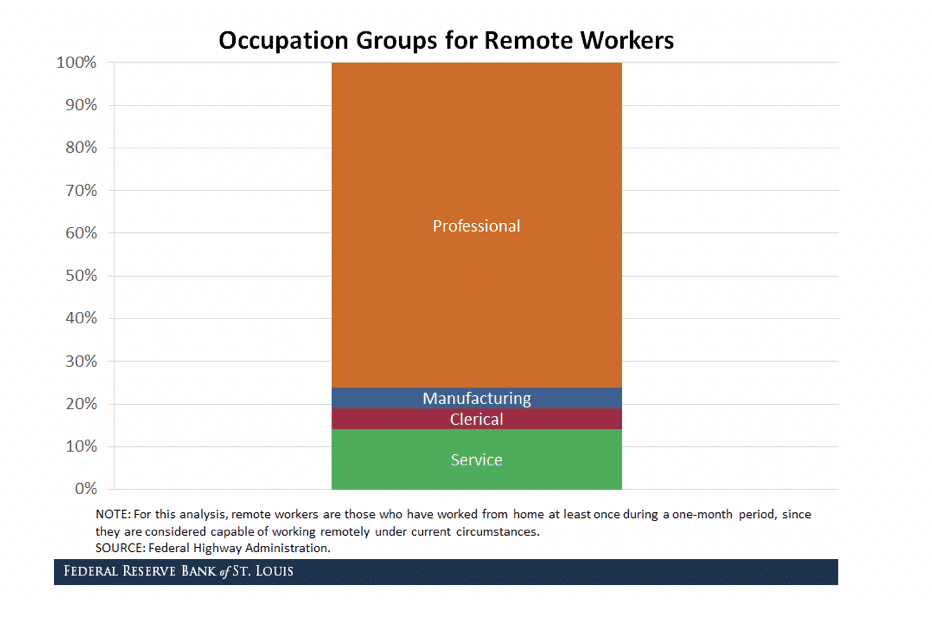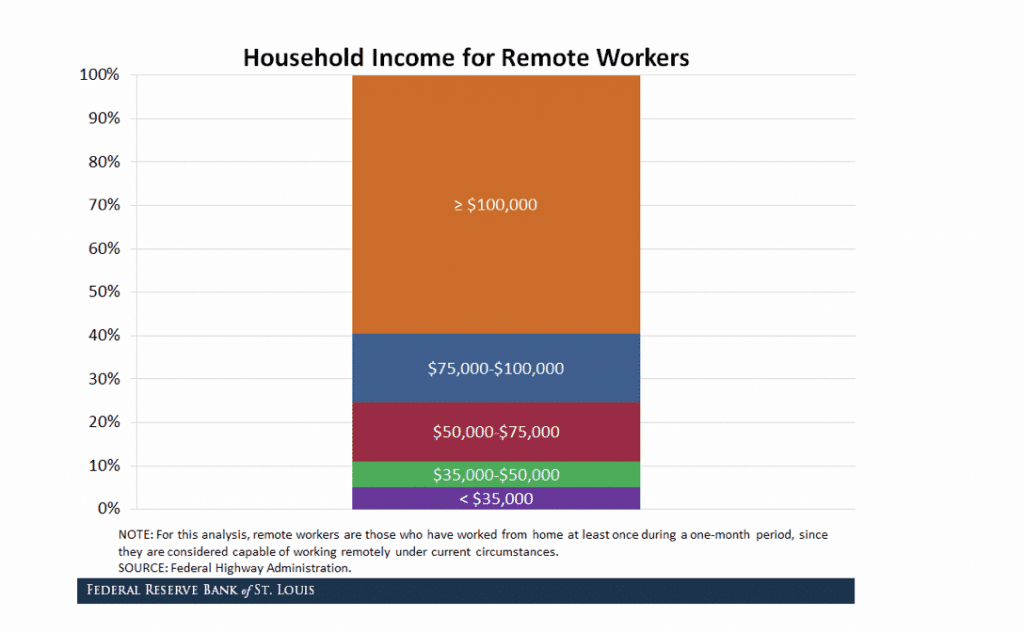The COVID-19 pandemic has prompted many firms across the U.S. to ask employees to work from home, and some companies, including automobile manufacturers, have halted work altogether.
In response to the viral outbreak, many state and local governments have ordered public spaces—such as restaurants—and other businesses deemed non-essential to close or to limit occupancy. In occupations less prepared for remote work, expect to see more workers furloughed or laid off as a response to these public health measures.
The Federal Reserve Bank of St. Louis has documented increasing trends toward telecommuting as far back as 1980, so we turn to its research on types of workers most likely to adjust to the current crisis by telecommuting, based on occupation and income.
The Fed broadly defines telework in the U.S. as those employees who have worked from home at least once during a one-month period. They also consider whether employees are capable of working remotely under current circumstances and, as of 2017, the Fed estimated only about 13 percent of full-time workers were prepared for remote work.
The chart below breaks down remote-ready workers by occupation.

Professional workers, including managers and those in technical occupations, represent a little more than 75 percent of remote-ready workers. Service workers, including sales, represent approximately 14 percent. Manufacturing, which also includes construction and farming, and clerical occupations each represent only 5% of remote-ready workers.
The next figure demonstrates how income for remote-ready workers breaks down.

Individuals in household earning more than $100,000 per year comprise 60 percent of teleworkers. Those with incomes less than $50,000, together, are only 11percent of remote-ready workers.
These figures suggest which workers are likely to be asked to work from home during the pandemic event and which are likely to be out of work. Those with higher household incomes in professional occupations are most likely to work remotely.
As we’ve seen, the financial burden of the crisis has been felt hardest by lower-income individuals in nonprofessional occupations. Policies to deal with this burden will need to address the loss of income for these individuals while respecting the precautions needed to deal the outbreak.
Possible federal stimulus policies are needed to help furloughed or laid-off workers, which would assist those we’ve identified as less capable of remote work. Several months into the crisis, experts are still evaluating a wide range of scenarios for the trajectory of the virus in the United States. Some of these scenarios involve a substantial toll on Americans’ health. If coordinated macroeconomic policies could help to slow the rate of transmission—by an amount that would reduce overloading U.S. hospitals and help buy time to find a vaccine—so that some of the negative health effects were reduced, this would be a major return on the federal dollars invested in such a program. The pay-off would be in addition to some of the standard business cycle mitigation that motivates standard fiscal interventions.
SOURCE
https://www.stlouisfed.org/on-the-economy/2020/march/employees-work-home
Error: Contact form not found.





